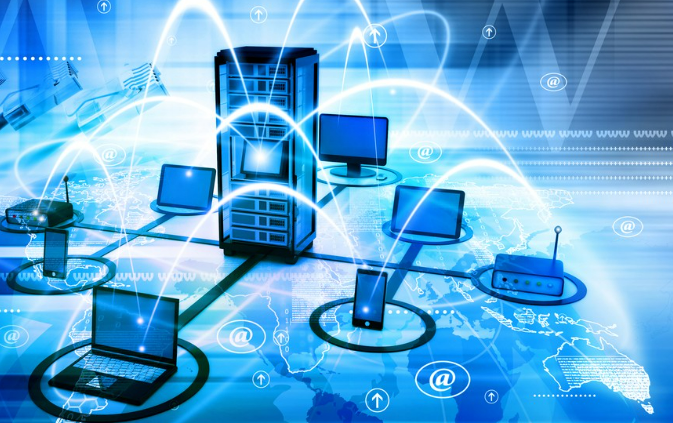Network and Communication: The Backbone of Modern Connectivity
In today’s fast-paced, digitally driven world, networking and communication systems form the backbone of almost every aspect of daily life. Whether it’s sending emails, streaming videos, making online purchases, or collaborating across global teams, our ability to communicate seamlessly across vast distances depends on a well-structured network infrastructure.
What is a Network?
At its core, a network is a group of interconnected devices that share data and resources. These devices could include computers, servers, mobile phones, and more. Networks are classified based on their size, function, and layout. The most common types include:
- Local Area Networks (LAN): Connects devices within a limited area like a home, office, or campus. A LAN is typically fast and highly secure.
- Wide Area Networks (WAN): Covers a broad geographic region, connecting devices across cities, countries, or even continents. The internet is the largest WAN.
- Metropolitan Area Networks (MAN): Typically cover a larger area than a LAN but smaller than a WAN, often used by cities or large institutions.
- Personal Area Networks (PAN): Smaller, often wireless networks used for communication between devices such as smartphones, laptops, and tablets, often over Bluetooth.
Types of Communication
Communication in networking occurs through several protocols that define how data is transferred between devices. These include:
- Wired Communication: Uses physical cables like Ethernet to transmit data. It’s often faster and more secure compared to wireless options but limited by mobility.
- Wireless Communication: Uses radio waves, microwaves, or infrared signals to transmit data without physical connections. Wireless networking technologies include Wi-Fi, Bluetooth, and cellular networks (3G, 4G, 5G).
Key Networking Concepts
Several key concepts form the foundation of network and communication systems:
- IP Addressing: Every device on a network is assigned a unique Internet Protocol (IP) address. This address identifies the device and allows data to be routed to it.
- DNS (Domain Name System): Converts user-friendly domain names (e.g., www.example.com) into IP addresses, making it easier for humans to access websites without needing to remember numerical addresses.
- Data Transmission: Data sent over networks is broken into smaller pieces called packets. These packets are transmitted to their destination where they are reassembled into the original data.
- Bandwidth: Refers to the maximum amount of data that can be transmitted over a network at any given time. Higher bandwidth allows faster communication.
- Latency: The delay before a transfer of data begins following an instruction for its transfer. Lower latency leads to faster communication between devices.
Network Security
As networking becomes more pervasive, the need for network security has grown dramatically. Cyberattacks, data breaches, and unauthorized access are constant threats. To combat these, companies implement a range of security measures such as:
- Firewalls: Act as barriers between trusted internal networks and untrusted external networks, controlling the flow of data based on security rules.
- Encryption: Converts data into a code to prevent unauthorized access during transmission.
- VPNs (Virtual Private Networks): Secure networks that allow remote users to access a private network over the internet safely.
- Intrusion Detection Systems (IDS): Monitors network traffic for suspicious activity, helping detect and mitigate threats in real-time.
The Role of Communication in Networking
Effective network communication involves more than just connecting devices; it’s about ensuring reliable, fast, and secure data exchange. Technologies like VoIP (Voice over Internet Protocol), instant messaging, video conferencing, and cloud computing have revolutionized how we communicate in both personal and business contexts.
For example, cloud communication services like Zoom or Microsoft Teams allow businesses to collaborate in real-time, regardless of geographical location. These services rely on robust network infrastructures to offer low-latency, high-quality communication.
The Future of Network and Communication
Looking ahead, innovations like 5G networks, Internet of Things (IoT), and edge computing are set to redefine how we interact with the digital world:
- 5G Networks: Offering faster speeds and lower latency than ever before, 5G will enhance everything from mobile internet use to connected smart cities.
- IoT (Internet of Things): IoT refers to the network of physical devices connected to the internet, from smart thermostats to connected cars. As IoT grows, it demands more reliable and faster network solutions.
- Edge Computing: This shifts data processing closer to the source of data generation (the “edge” of the network) rather than relying on centralized cloud systems, reducing latency and increasing speed.
Conclusion
In an era where information is power, networks and communication systems have become the lifeblood of our globalized society. As technologies advance, the need for faster, more secure, and more reliable communication systems will continue to grow, driving innovations that make the world more connected than ever before.
From personal communication to large-scale business operations, networking and communication infrastructure is not just a convenience but a necessity for our future.


Comments are closed.